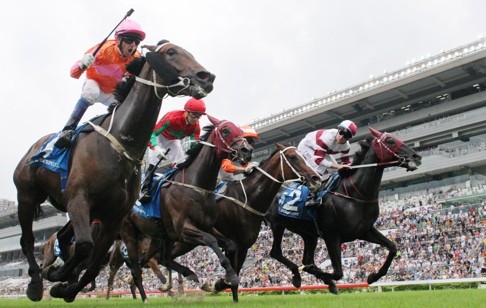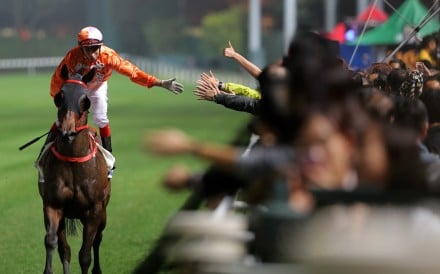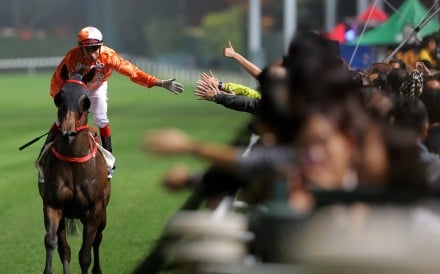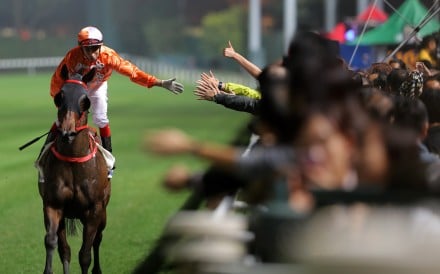Someone at the Asian Racing Conference must have forgotten to send the memo: racing conferences are for navel-gazing and backslapping, not decision-making or actual action – and certainly not saying anything with any edge.
Still, as nice as it was to hear something of substance come out of the recent ARC in Mumbai, much of it – even if obviously for the sport’s long term benefit – can be filed under the category, “Be careful what you wish for.”
Hong Kong’s Group races being opened to outside competition, a war on illegal gambling in Asia and a slap in the face for Australia’s racing journalists – juicy headlines came out about all.
Let’s start with the most meaningful announcement of the ARC, that Hong Kong’s Group races, bar age-restricted events and the Group Three Hong Kong Macau Trophy, will be open to foreign-trained horses.
The number had already jumped to 14 races last season, but now 31 races will be open to all comers.
 In reality, this might not mean an opening of the floodgates – at least from outside the region, with Europeans or Australasians unlikely to fly nine-plus hours to contest a race like the National Day Cup, for instance – but closer to home, Japanese owners and trainers could take a keen interest in what could be perceived as weaker Group races.
In reality, this might not mean an opening of the floodgates – at least from outside the region, with Europeans or Australasians unlikely to fly nine-plus hours to contest a race like the National Day Cup, for instance – but closer to home, Japanese owners and trainers could take a keen interest in what could be perceived as weaker Group races.
A five-hour flight and relatively simple back and forth quarantine arrangements make a trip to Sha Tin enticing, as does getting away from a Group race schedule that emphasises quality over quantity.
Japan has 22 Group One races a year, but only nine open to all ages and sexes on turf, and it is a group that includes two incredibly hard-to-win miles and staying races like the Japan Cup and Arima Kinen that foreign horses are finding harder and harder to win.
It is in this staying category that trainers at Sha Tin should be most worried about a Japanese invasion, with a race like the Group One Standard Chartered Champions & Chater Cup looking at the mercy of any Japanese horse capable of being remotely competitive in that category at home.
 The Champions & Chater – a race that was already open to all last season – doesn’t have a recent honour role that is scaring anyone, and it falls perfectly on the calender for horses that have contested the Group One Tenno Sho (Spring) three weeks earlier. The Tenno Sho, worth around twice as much as the HK$10 million Champions & Chater, is over 3,200m, and horses that don’t quite get the two miles might see the race at Sha Tin as an easier option – which it is.
The Champions & Chater – a race that was already open to all last season – doesn’t have a recent honour role that is scaring anyone, and it falls perfectly on the calender for horses that have contested the Group One Tenno Sho (Spring) three weeks earlier. The Tenno Sho, worth around twice as much as the HK$10 million Champions & Chater, is over 3,200m, and horses that don’t quite get the two miles might see the race at Sha Tin as an easier option – which it is.
Another added incentive for trainers of younger Japanese horses: many of Hong Kong’s Group Ones are weight-for-age, it’s just that every horse that contests them is an older gelding so after a while they have become labelled “set weights” or “level weights” races.
It’s all good in the long run for Hong Kong, even if they take a hit in some big races. The Japan Cup was started in the early 1980s and was immediately thrown open to outsiders – to the detriment of the locals in the short term – and look at it now, it is all but unwinnable to an outsider.
Purbrick: Citibet alone, turnover of AUD$929m on Aus racing 2013/14. 8% of legal turnover. Tip of iceberg #ARC2016 pic.twitter.com/8OcFaE2GWU
— Andrew Hawkins (@AndrewNJHawkins) January 28, 2016
Pursuing illegal gambling in Asia seems a noble enough cause and we don’t doubt for a minute that the Jockey Club’s call for a taskforce aimed at the black market will be a meaningful one. But could hurting the illegal bookies result in a short-term hit to turnover?
When the SCMP ran a story on the big Asian exchanges, CITIbet and AA-Star, in late 2014, many of the experts said that the illegal activity actually had a net positive effect on legal turnover.
Of course, first and foremost, the exchanges are a serious threat to integrity, so shutting down the exchanges is the right thing to do. Again it’s a case of “careful what you wish for”, though, because financially, it could mean less liquidity in the market place. The amount estimated to be bet illegally on Hong Kong racing, US$12.8 billion, isn’t a figure that is mutually exclusive to the legal amount of US$13.8 billion bet last year, for much of the black money clearly ends up in the legal pools.
Finally, there’s the claim from Australian director of Racing.com Greg Nichols, who declared the quality of his country’s racing journalism as “abysmal” – an interesting claim from someone who runs what looks like a racing news site.
Greg Nicholls declares level of horse racing journalism in Australia as abysmal #ARC2016
— Johnno Spence (@JSCSport) January 27, 2016
Most Australian racing journalists are subject to commercial pressures. It was these pressures in the last year that saw one of its most long-serving and respected columnists, Ken Callander, quit his role at Sydney’s Daily Telegraph, citing censorship from governing body Racing NSW.
“I resigned on a matter of principle. I didn’t believe that I had editorial freedom in items regarding Racing NSW, hence it was totally against my ethics to criticise others in the industry but not criticise the head body,” he told the rival Sydney Morning Herald after his shock resignation.
The year also saw stewards haul television presenter Brent Zerafa into an inquiry, being able to charge him with bringing racing into disrepute on the basis that he also part-owned a horse, and taking evidence from his phone. It was a charge that eventually cost him his job with Sky Racing.
We can’t help but wonder whether Australian racing’s disparate governing bodies want the best of both worlds – glowing coverage without any of the pesky questions and critical comment that can come with actual journalism.

If the “writers” and “pundits”, as they were labelled by Nichols, were allowed to be “journalists”, how would the stakeholders stand up to the scrutiny? Debacles like the Australian Turf Club’s redevelopment of Randwick and the battle over broadcast rights in Victoria are just two topics into which any young journalist worth his notepad would love to dig. It is an industry in desperate need of a mirror that objective, independent comment can provide.
In all cases – opening races, an attack on Asia’s illegal bookies and a little bit of freedom for the press down under – it could be a case of short term pain for long term gain.





















